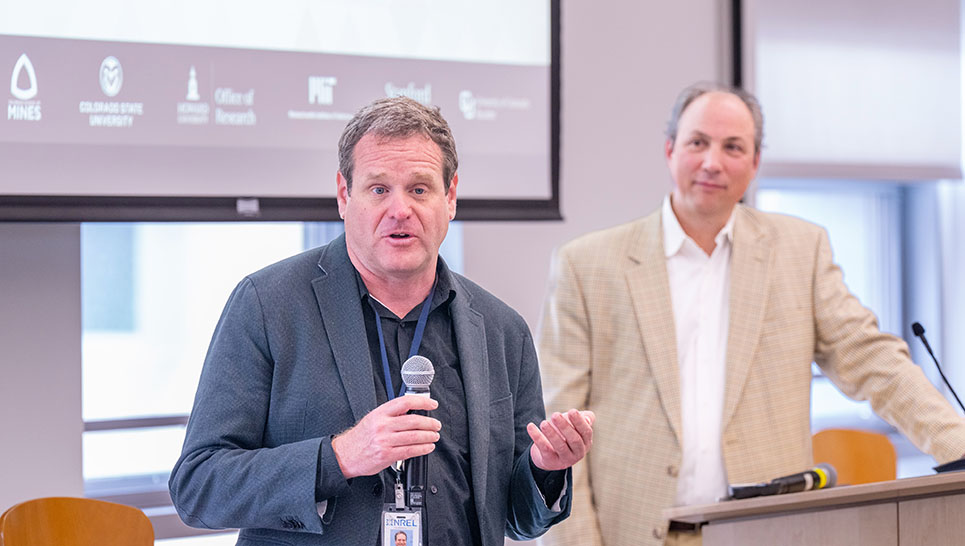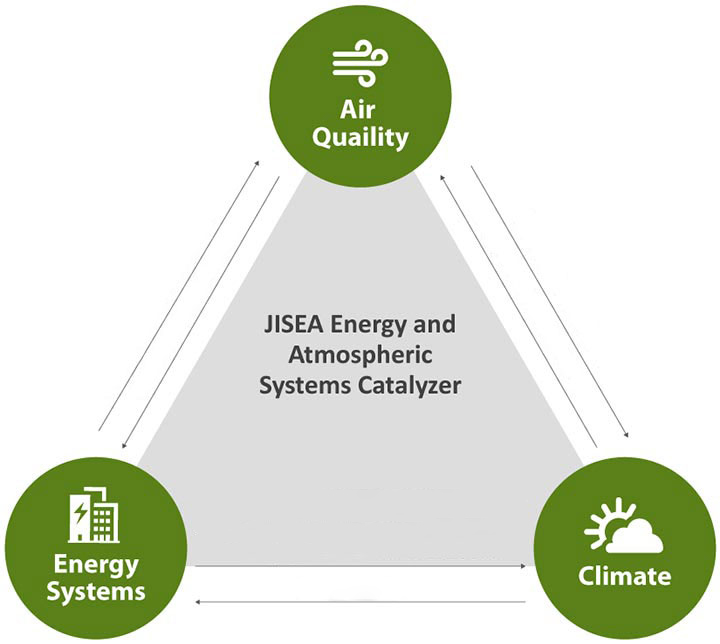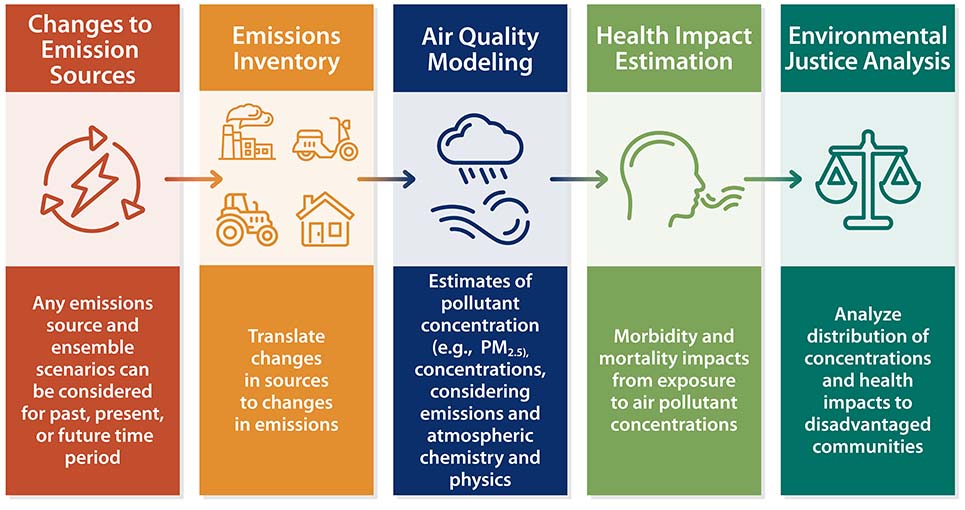Looking Back at the Impact of the Energy and Atmospheric Systems Catalyzer

The Energy and Atmospheric Systems Catalyzer—one of the inaugural catalyzers of the Joint Institute for Strategic Energy Analysis's (JISEA's) Catalyzer Program—finished its term this past fall, after 3 years of modeling and quantifying multidirectional relationships among climate, air quality, and energy systems with expertise from leaders across all three areas.
The Catalyzer Program accelerates the clean energy transition through collaborative analysis of emerging research areas and clean energy challenges. Each catalyzer runs for 2–3 years and brings together thought leaders across the institute, the National Renewable Energy Laboratory (NREL), partner universities, and industry to launch new, crosscutting research capabilities to achieve clean energy goals at speed and scale.

The Energy and Atmospheric Systems Catalyzer, led by Garvin Heath, NREL principal environmental engineer, and Michael Martin, staff scientist at the NREL Computational Science Center, focused on the relationship between climate change and atmospheric sciences. Over the catalyzer term, the team developed and expanded upon analysis capabilities in this area and, in the process, supported numerous high-impact studies around the world.
Catalyzing Change in Public Health Outcomes
One of the focuses of the Energy and Atmospheric Systems Catalyzer work was investigating how energy systems and air quality intersect to affect public health and health disparities. Heath spoke about the catalyzer's work addressing these issues in the recently released Long Story Short video.
"A lot of the air pollution is caused by combustion, and combustion mostly originates in the energy system," said Heath. "So, as we think about exchanging renewables for conventional—especially fossil—energy, we're then clearing the skies. We're going to be able to decrease emissions and, therefore, decrease health effects that result from them."
Heath highlighted the Los Angeles 100% Renewable Energy Study (LA100) as one example of the key research being supported by the catalyzer. With input and leadership from community voices, the project developed implementation-ready strategies to reduce air pollutants and transition to 100% renewable energy in Los Angeles by 2035.
"Environmental justice and health impacts to disadvantaged communities are central to our air quality work," said Heath. "We need to prioritize diminishing health impacts to vulnerable communities as we plan the transition to renewable energy integration."
Another key project from the catalyzer analyzed the potential environmental justice benefits of substituting hydrogen for fossil-combustion-based process heat in three of the largest U.S. industries—steel and cement manufacturing and petroleum refining.
Understanding Climate Feedbacks in Energy Systems
In addition to the catalyzer's work examining public health cobenefits of reducing air pollution as part of the energy transition, the catalyzer also explored the relationship between energy and climate as part of NREL's work.
"The catalyzer gave us the chance to see just how many items atmosphere sciences touches in sustainability," said Martin. "We found that, at one point, 1/6th of the computational time in the Eagle supercomputer was going to projects with an atmospheric sciences component. Stepping back and looking at these problems helped facilitate larger thinking of NREL's role in these projects, including investments into looking at the impact of geoengineering on energy systems."
The catalyzer also supported a literature review of existing work on climate feedbacks from renewable energy, such as the changes in surface albedo because of solar panels and the mixing in atmospheric boundary layers from wind turbines. This review is currently being prepared for peer review and will shape NREL's future activity in this area.
Enhancing Capabilities
The catalyzer's support of the development of emissions and air quality tools and models enables broader use within larger studies and builds on NREL's capabilities. Within air quality research, it is crucial to account for nongreenhouse gas air pollutant emissions, consider chemistry and physics to estimate changes to pollutant concentrations, and understand environmental health sciences to predict changes to public health. These capabilities are complementary to—and enhance—NREL's core knowledge of energy systems.

"Catalyzer Program support has allowed concentrated effort to expand and elevate NREL's air-quality-related capabilities for both domestic and international clients applicable to any energy sector," said Heath. "It allowed us to pursue more business development than would have been possible using normal business development channels with tremendous success—nearly $2M in awarded projects with more in the pipeline. And it allowed us to independently demonstrate NREL's unique role at the intersection of energy systems, air quality/health, climate, and environmental justice on a topic of high current relevance but no prior research."
As energy and atmospheric systems research graduates beyond its catalyzer status at NREL, the research area will continue to build upon the progress set by the Catalyzer Program's early investment. Moving forward, the Catalyzer Program will continue its efforts to develop capabilities through its three active catalyzers—the Green Computing Catalyzer, Climate Adaptation and Clean Energy Intersections Catalyzer, and Justice Underpinning Science and Technology Research Catalyzer—while preparing to launch two more before the end of the year.
Find out more about NREL's air quality research and watch the Long Story Short video.
